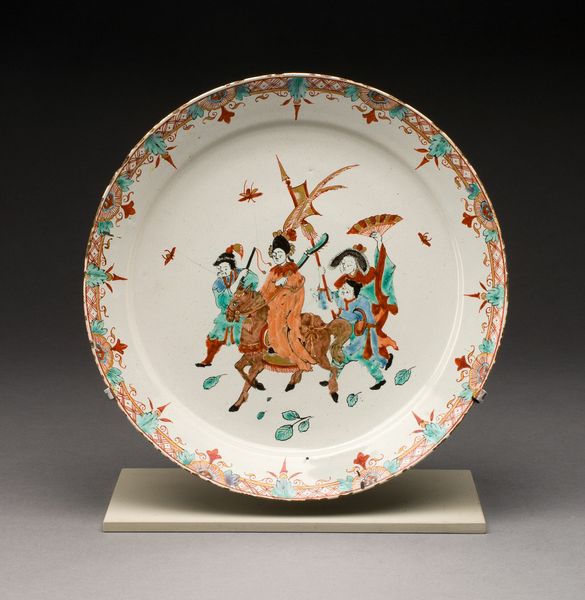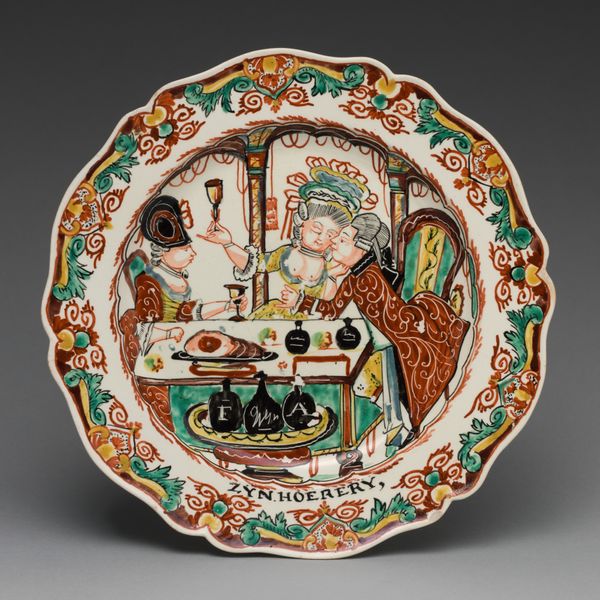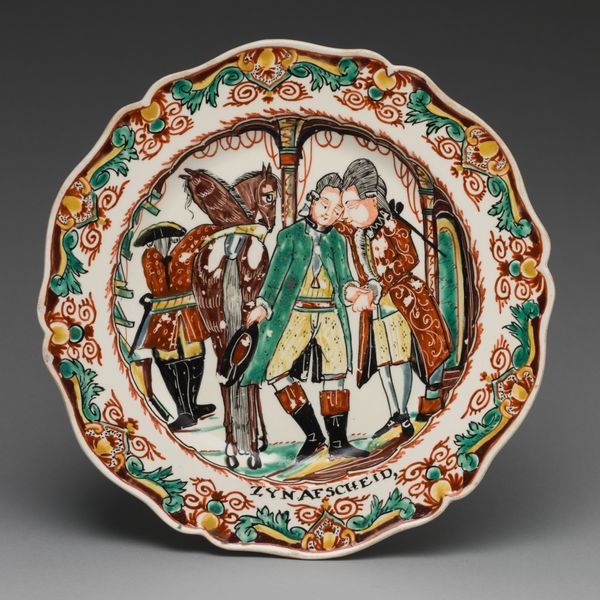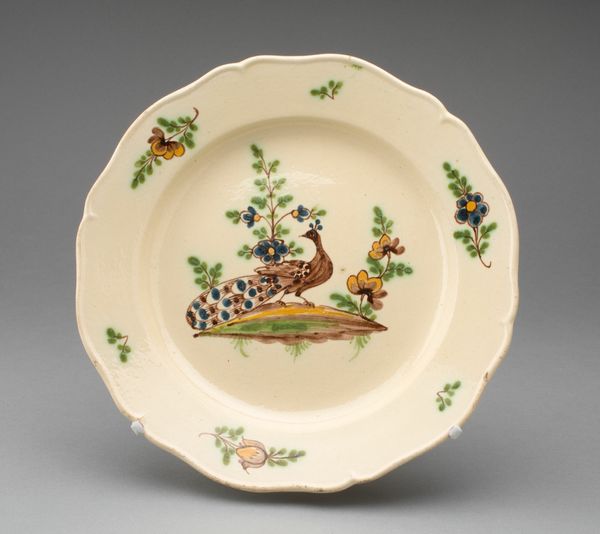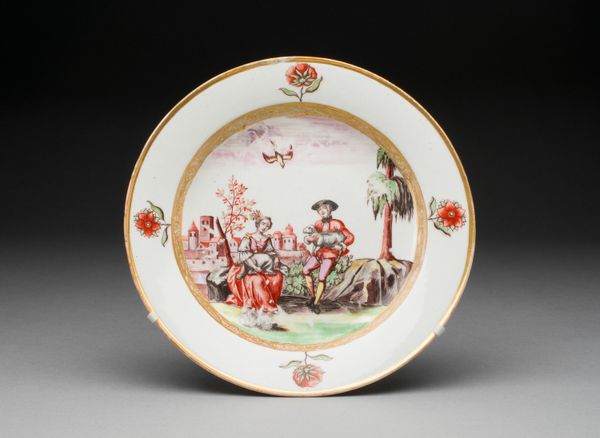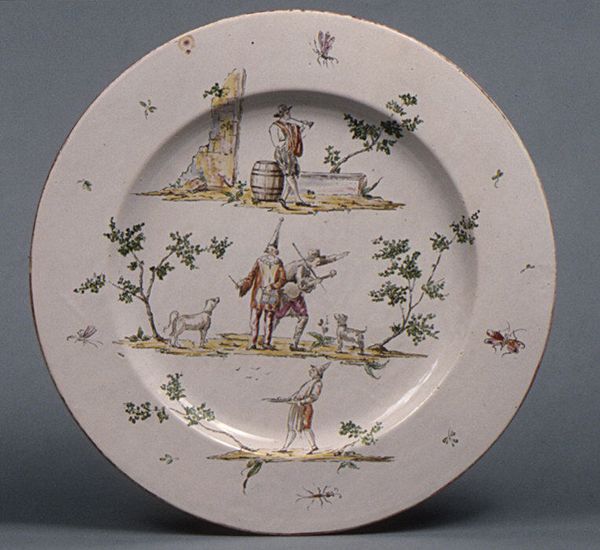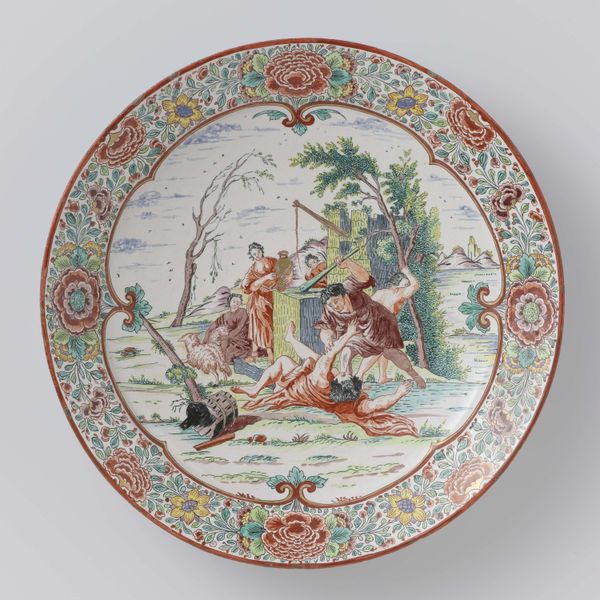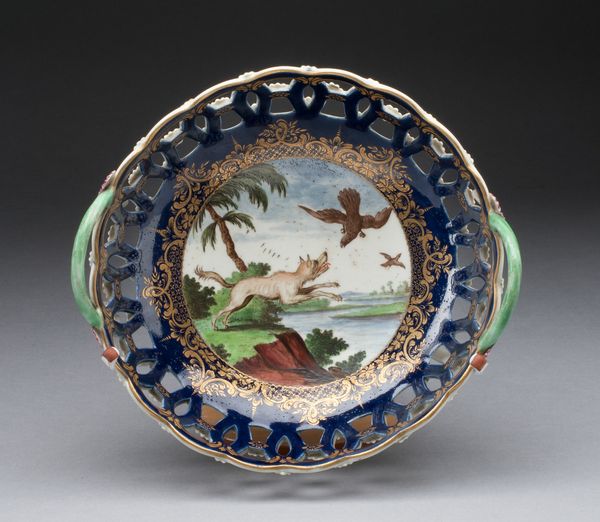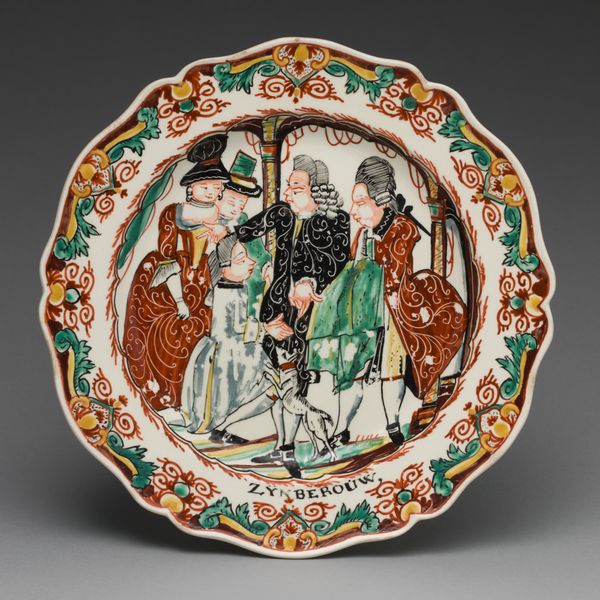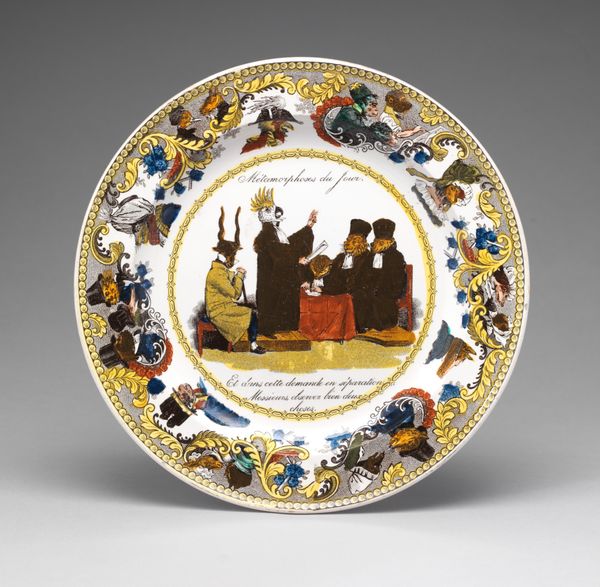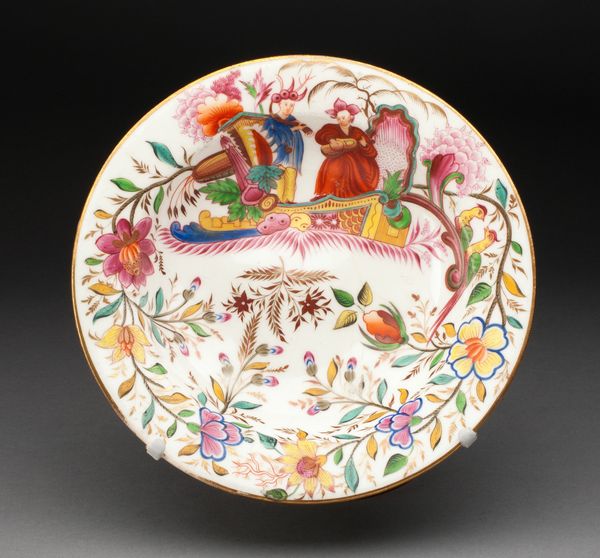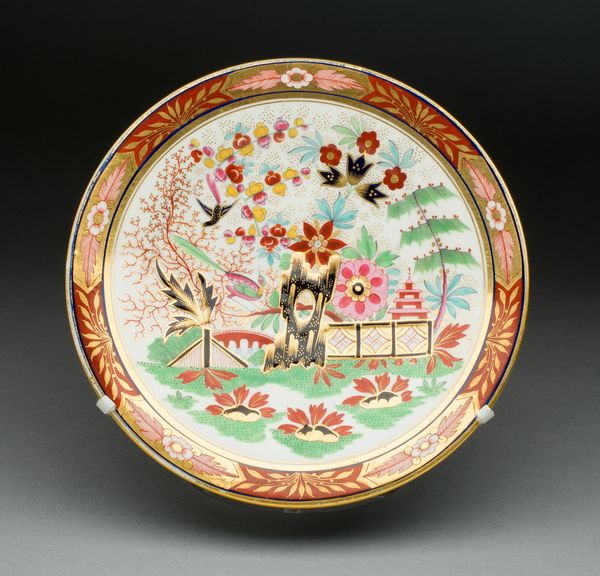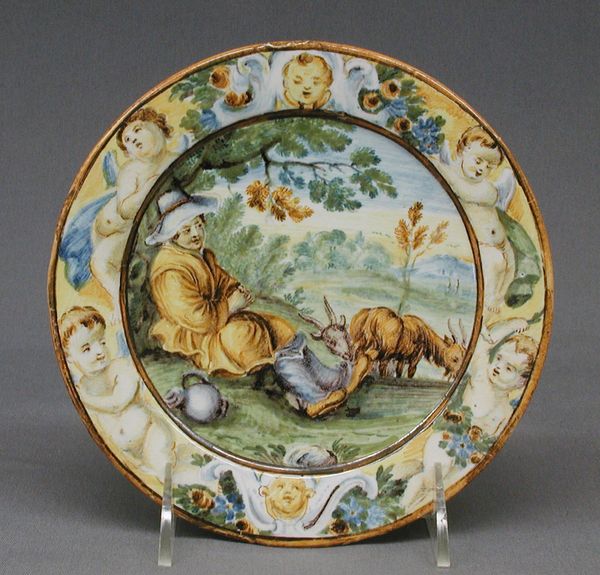
Dimensions: Diameter: 7 15/16 in. (20.2 cm)
Copyright: Public Domain
Editor: Here we have a tin-glazed earthenware plate, created sometime between 1785 and 1795, part of a set of six by John Turner, currently residing here at the Metropolitan Museum of Art. The image itself is rather intriguing, and it feels like looking through a keyhole into a different world, though what strikes me most is the balance and symmetry, from the positioning of the animals to the gentleman standing front and centre. What do you notice first? Curator: Primarily, I’m drawn to the tripartite structure. Consider the way the painterly central scene is framed, both literally by the circular plate edge and figuratively, with the wavy, Rococo ornamentation surrounding it. How would you say the scene depicted contributes to the work as a whole? Editor: It does seem the painted portion creates a sense of contained theatre; the landscape is a stage of sorts. The colour palette is rather subdued, a medley of browns, yellows, and muted greens, almost as though the scene itself is ageing with the ceramic, drawing my eyes into the foreground where the man and animals are placed. What can you tell me about John Turner? Curator: Turner's mastery truly reveals itself in the details. Take note, for instance, of the textured glaze imitating foliage around the edges, offering not only visual richness, but tactile. Furthermore, we observe the delicate brushwork rendering the scene with such clarity. One sees pastorial fantasies of this era reflected in ceramics but John Turner elevated it in many ways, making this work noteworthy. Considering Turner's craft, where do you see meaning expressed in the image and materiality coming together? Editor: Now that I think of it, it feels like the glaze adds an unexpected texture and liveliness to the artwork overall, uniting it all to become one harmonious and singular art piece, from the inner landscape painting to the overall decorative object itself. I think I understand the brilliance here! Curator: Indeed! Seeing the elements synthesize unveils how technique shapes and augments our understanding and appreciation of an artwork's aesthetic language.
Comments
No comments
Be the first to comment and join the conversation on the ultimate creative platform.
